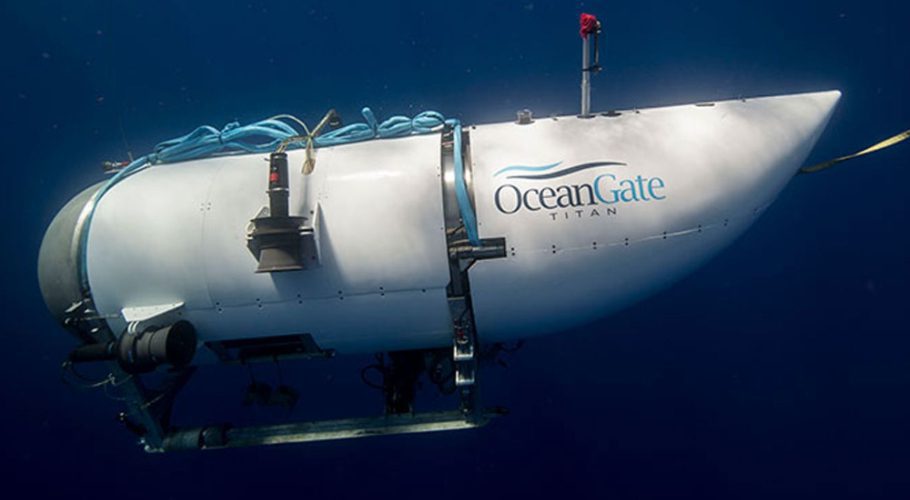NEW YORK: Canadian aircraft detected underwater noises in the North Atlantic in the search for a tourist submersible that vanished while on a voyage to the wreck of the Titanic, the US Coast Guard said.
The discovery led search teams to relocate their underwater robotic search operations “in an attempt to explore the origin of the noises,” the Coast Guard said in a series of tweets early on Wednesday.
The newly relocated searches by ROV (remotely operated vehicles) came up empty handed but will continue, the Coast Guard said. The Coast Guard did not detail the nature or extent of the sounds that were detected, or how they were picked up.
Several US media outlets, citing internal US government communications, reported that banging sounds were detected by Canadian aircraft at 30-minute intervals in the search area.
It said the sounds were detected by sonar buoys deployed in the area “close to the distress position” and that additional sonar picked up more banging four hours later.
US media outlet CNN cited a US government memo also as saying that additional sounds were heard about four hours after initial banging were detected, although the news channel said the second occurrence of noise was not described as banging.
The Titan, operated by US-based OceanGate Expeditions, was built to stay underwater for 96 hours, according to its specifications – giving the five people aboard until Thursday morning before air runs out.
One pilot and four passengers were inside the miniature sub when it lost communication with a parent ship on the surface about an hour and 45 minutes into its two-hour dive.
US and Canadian aircraft have searched more than 7,600 square miles of open sea, an area larger than the state of Connecticut, U.S. Coast Guard Captain Jamie Frederick told reporters at a press conference. A commercial vessel with a remote-controlled deepwater submersible was also searching near the site, Frederick said.
Separately, a French research ship carrying its own deep-sea diving robot vessel was dispatched to the search area at the request of the U.S. Navy and was expected to arrive Wednesday night local time, the Ifremer research institute said.
Those aboard Titan for a tourist expedition that costs $250,000 per person included British billionaire Hamish Harding, 58, and Pakistani-born businessman Shahzada Dawood, 48, with his 19-year-old son Suleman, who are both British citizens.
French explorer Paul-Henri Nargeolet, 77, and Stockton Rush, founder and CEO of OceanGate Expeditions, were also reported to be on board. Authorities have not confirmed the identity of any passenger.
Rescuers face significant obstacles both in finding the Titan and in saving the people aboard. The submersible is sealed with bolts from the outside, preventing the occupants from escaping without assistance even if it surfaces.
If the Titan is on the ocean floor, a rescue effort would be even more challenging due to the extreme conditions more than 2 miles beneath the surface.
The Titanic lies 12,500 feet (3,810 meters) underwater, where no sunlight penetrates. Only specialized equipment can reach such depths without being crushed by the massive water pressure.




































